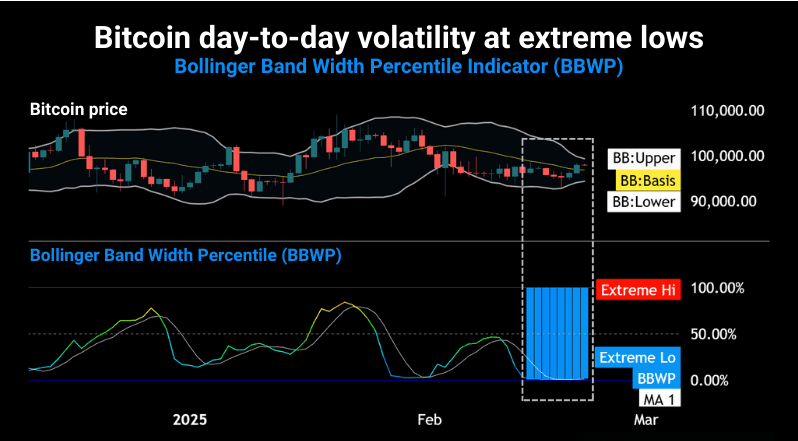Cryptocurrency can be an exciting way to invest, with stories of Bitcoin millionaires fueling dreams of quick wealth. But it’s not all rosy—crypto investing comes with serious risks that can wipe out your money if you’re not careful. This beginner-friendly guide explains the key risks of crypto investing in 2025, from volatility to scams, and shares simple tips to protect yourself. Let’s dive in so you can invest smarter!

Why Crypto Investing is Risky
Unlike traditional investments like stocks or bonds, crypto is highly speculative and unregulated, making it a wild ride. Prices can soar or crash overnight, and there’s no safety net like a bank to recover losses. For beginners, understanding these risks is crucial to avoid costly mistakes.
Key Risks: Volatility, scams, security threats, regulatory changes, and lack of knowledge can all lead to losses.
Major Risks of Crypto Investing
Here are the top risks you need to know before investing in cryptocurrencies like Bitcoin or Ethereum in 2025.
1. Extreme Price Volatility
Crypto prices can swing wildly, sometimes dropping 20–50% in days or soaring just as fast. This volatility can lead to big losses if you buy at a peak or panic-sell during a dip.
Example: In 2022, Bitcoin crashed over 60% in months, hurting investors who bought at its $69,000 peak.
Tip: Track price trends on CoinGecko to understand market swings.

2. Scams and Fraud
Crypto is a magnet for scammers targeting beginners with fake coins, phishing sites, and promises of quick riches.
Common Scams:
- Phishing: Fake websites mimicking Coinbase to steal your login.
- Pump-and-Dump: Hyped coins that crash after insiders sell.
- Fake Giveaways: Scams on X asking you to send crypto for “free” returns.
Example: In 2024, scam projects cost investors billions, with fake coins vanishing overnight.
Tip: Research projects on CoinDesk before investing.
3. Security Threats and Hacks
Crypto has no bank to recover stolen funds. Hacks, lost passwords, or stolen seed phrases can erase your investment.
Common Threats:
- Exchange Hacks: Platforms like Binance can be breached.
- Wallet Vulnerabilities: Malware can steal your private keys.
- User Errors: Losing your seed phrase means losing your crypto forever.
Example: In 2024, a major exchange hack cost users millions, with no way to recover funds.
Tip: Use a hardware wallet like Ledger for secure storage.

4. Regulatory Uncertainty
Governments are still figuring out how to regulate crypto, and sudden rules or bans can tank prices or limit trading.
Examples:
- A country banning crypto exchanges can crash prices.
- Tax laws may require reporting all crypto gains, adding complexity.
Example: In 2021, China’s crypto crackdown caused a market-wide dip.
Tip: Stay updated on regulations via Cointelegraph.
5. Lack of Knowledge
Beginners often jump into crypto without understanding wallets, fees, or scams, leading to costly mistakes.
Examples:
- Paying high trading fees on small investments.
- Buying hyped coins with no real value.
- Storing crypto unsafely and losing it to hacks.
Tip: Learn basics on CoinDesk before investing.
6. Emotional Stress
Watching crypto prices swing can be a rollercoaster, leading to panic-selling or buying out of FOMO (fear of missing out).
Example: Selling Bitcoin during a 20% dip out of fear might mean missing a recovery to new highs.
Tip: Practice discipline with demo accounts on TradingView.
/assets/images/provider/photos/2412623.jpeg)
How to Minimize Crypto Investing Risks
You can’t eliminate risks, but these beginner-friendly strategies will help you invest safer in 2025.
1. Only Invest What You Can Afford to Lose
Crypto is speculative, so never use money needed for rent, bills, or emergencies.
How to Do It:
- Start with $10–$50 to learn the market.
- Keep an emergency fund in a savings account.
- Avoid borrowing or using credit to buy crypto.
Example: Losing $50 in a crash is a lesson, but losing $5,000 could hurt your finances.
2. Research Before Investing
Avoid hype-driven coins. Research ensures you’re investing in solid projects, not scams.
How to Do It:
- Read whitepapers and verify teams on project websites.
- Check market data on CoinGecko.
- Stick to established coins like Bitcoin or Ethereum.
Example: Ethereum’s real-world use in smart contracts makes it safer than unproven altcoins.
3. Secure Your Crypto Properly
Good security prevents losses from hacks or user errors.
How to Do It:
- Use a hardware wallet like Ledger for offline storage.
- Enable 2FA on exchanges like Kraken with Google Authenticator.
- Store your seed phrase offline on paper, never digitally.
- Move crypto to a personal wallet, not an exchange.
Example: A Ledger wallet saved users from 2024 exchange hacks.

4. Use Dollar-Cost Averaging (DCA)
DCA reduces the risk of buying at a peak by spreading your investment over time.
How to Do It:
- Invest $10 weekly on Coinbase regardless of price.
- Buy more when prices are low, less when high.
- Focus on long-term gains, not daily swings.
Example: Investing $10 weekly in Bitcoin averages your cost, softening a 30% crash.
5. Avoid Emotional Decisions
Stay calm to avoid buying high or selling low due to FOMO or panic.
How to Do It:
- Set clear goals (e.g., hold for a year or sell at a 20% gain).
- Limit price checks to weekly on CoinGecko.
- Practice with demo accounts on TradingView.
Example: Panic-selling Ethereum during a dip might mean missing a rebound.
6. Diversify Your Investments
Don’t put all your money in one coin. Diversifying spreads risk across assets.
How to Do It:
- Invest 60% in Bitcoin, 20% in Ethereum, 20% in stablecoins like USDC.
- Limit crypto to 5–10% of your total portfolio.
- Add non-crypto assets via Fidelity.
Example: If an altcoin crashes 80%, a diversified portfolio cushions the loss.
What to Do If Things Go Wrong
If you face issues while investing, act quickly:
- Market Crash: Don’t panic-sell; use DCA to buy at lower prices.
- Scam Suspected: Stop interactions, secure accounts, and report to IC3.gov.
- Hacked Account: Change passwords, enable 2FA, and move funds to a new wallet.
Tip: Losing a small investment is a lesson, not a disaster.
How to Start Investing Safely
Ready to invest despite the risks? Follow these steps to begin cautiously:
- Choose a Trusted Platform: Sign up on Coinbase or Kraken.
- Start Small: Invest $10–$50 in Bitcoin or Ethereum.
- Secure Funds: Use Trust Wallet or Ledger with 2FA.
- Learn Continuously: Follow Cointelegraph for updates.
Tip: Join Reddit’s r/cryptocurrency for beginner advice and scam warnings.
Conclusion
Crypto investing offers big opportunities but comes with risks like volatility, scams, and security threats. By starting small, researching on CoinDesk, securing funds with a Ledger wallet, and using DCA on Coinbase, you can minimize dangers. Stay informed via Cointelegraph and invest only what you can afford to lose. With these steps, you’ll navigate crypto’s risks and invest with confidence in 2025!






















